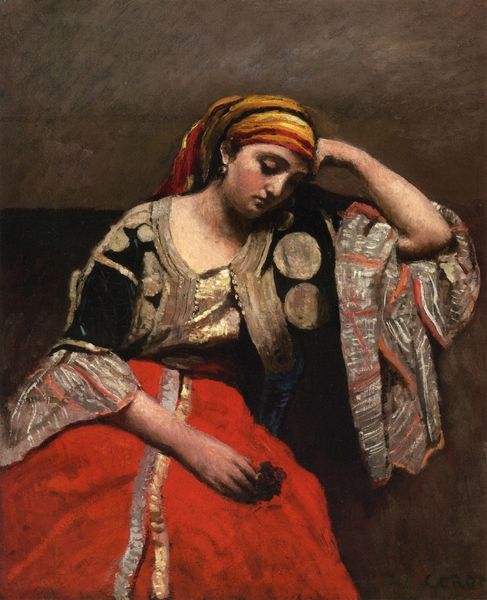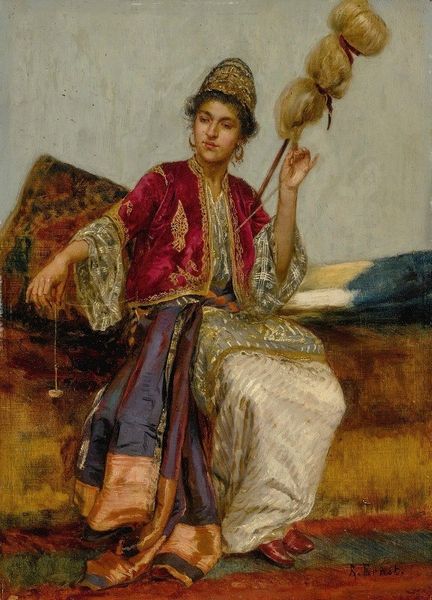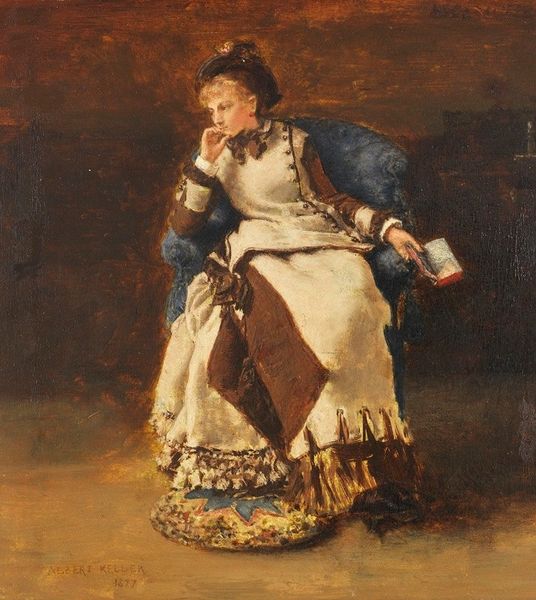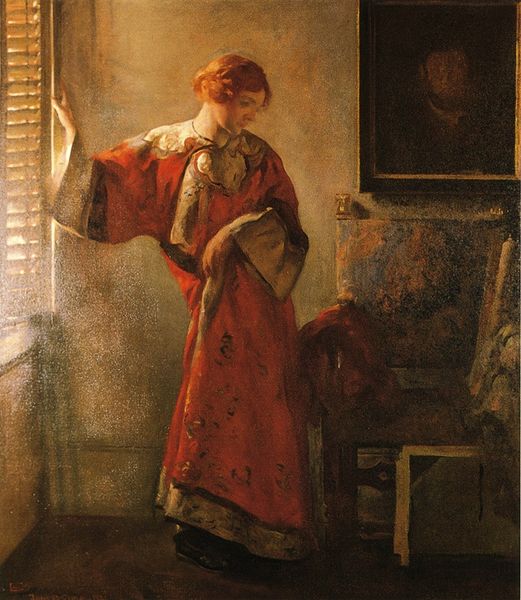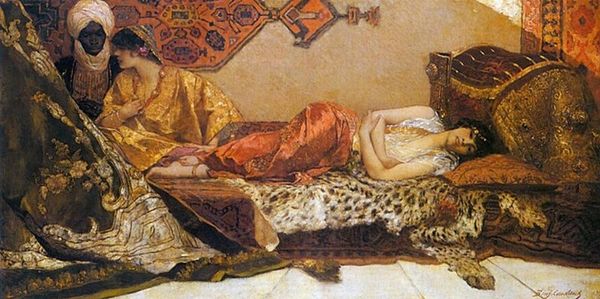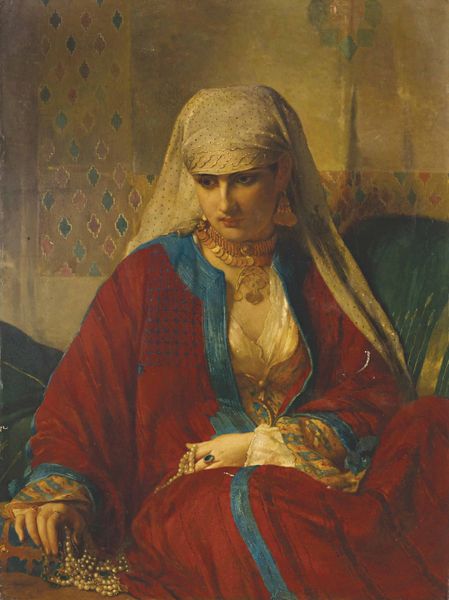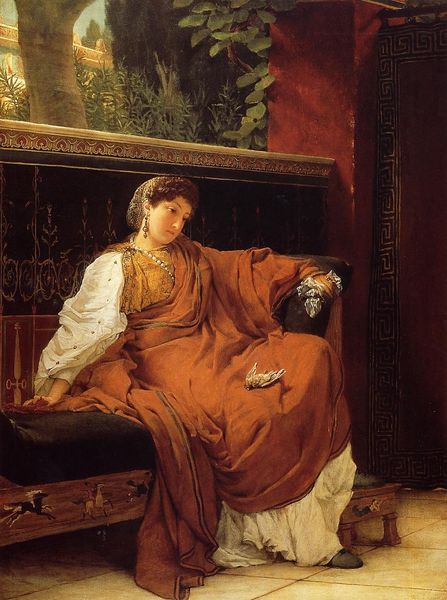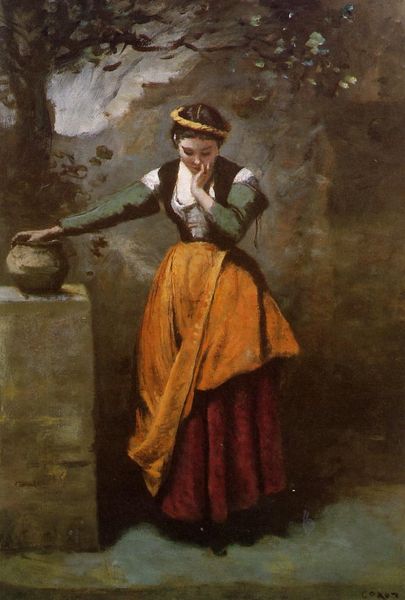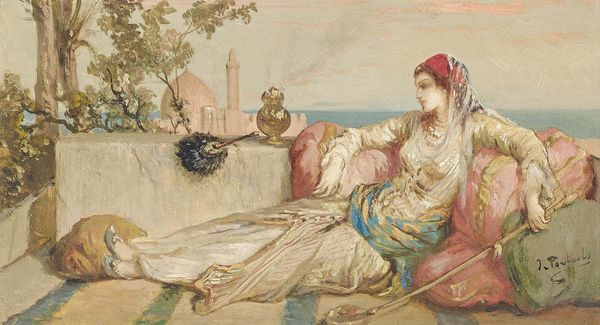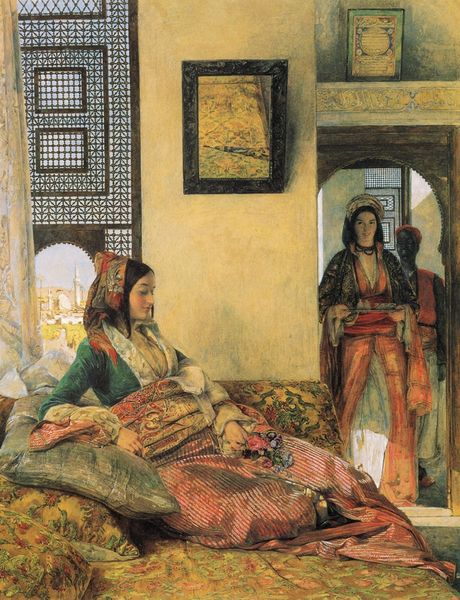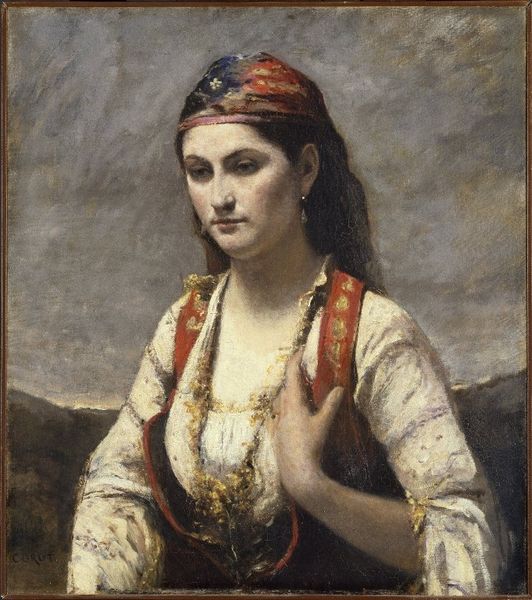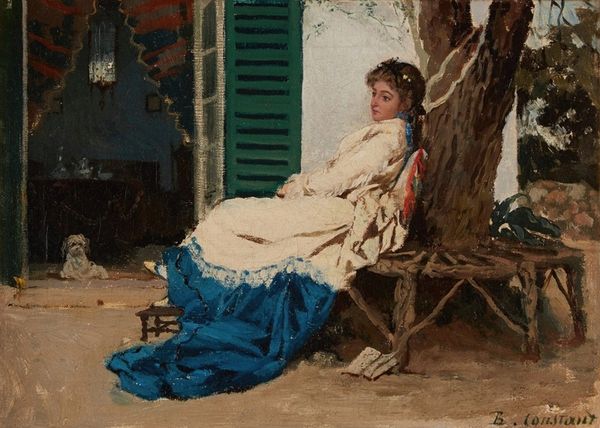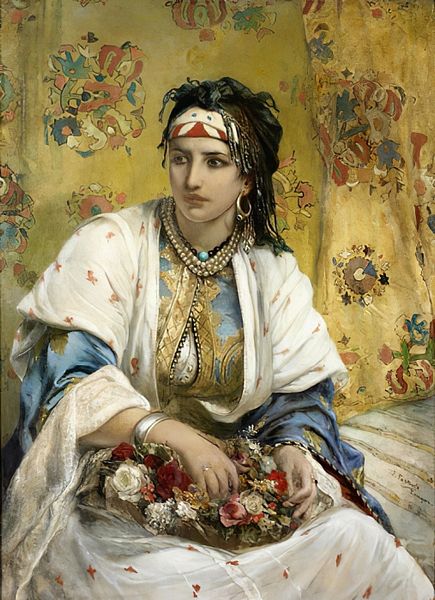
Copyright: Public domain
Camille Corot made this painting of an Odalisque in France sometime in the mid-19th century. An odalisque was a female slave or concubine in a Turkish seraglio, and by the 19th century, images of odalisques had become a common trope in Western painting, part of what Edward Said famously called "Orientalism." The image creates meaning through the visual codes of the "Orient," such as the turban, hookah, and languid pose. The painting is also an example of the institutional history of art. At this time, the French Academy was still a powerful force in the art world, and it promoted a style of painting that was idealized and classical. However, many artists were beginning to rebel against the Academy, and they were interested in creating more realistic and modern works of art. The interpretation of art is contingent on its social and institutional context. Researching the history of Orientalism and the French Academy can help us to understand the painting better.
Comments
No comments
Be the first to comment and join the conversation on the ultimate creative platform.
